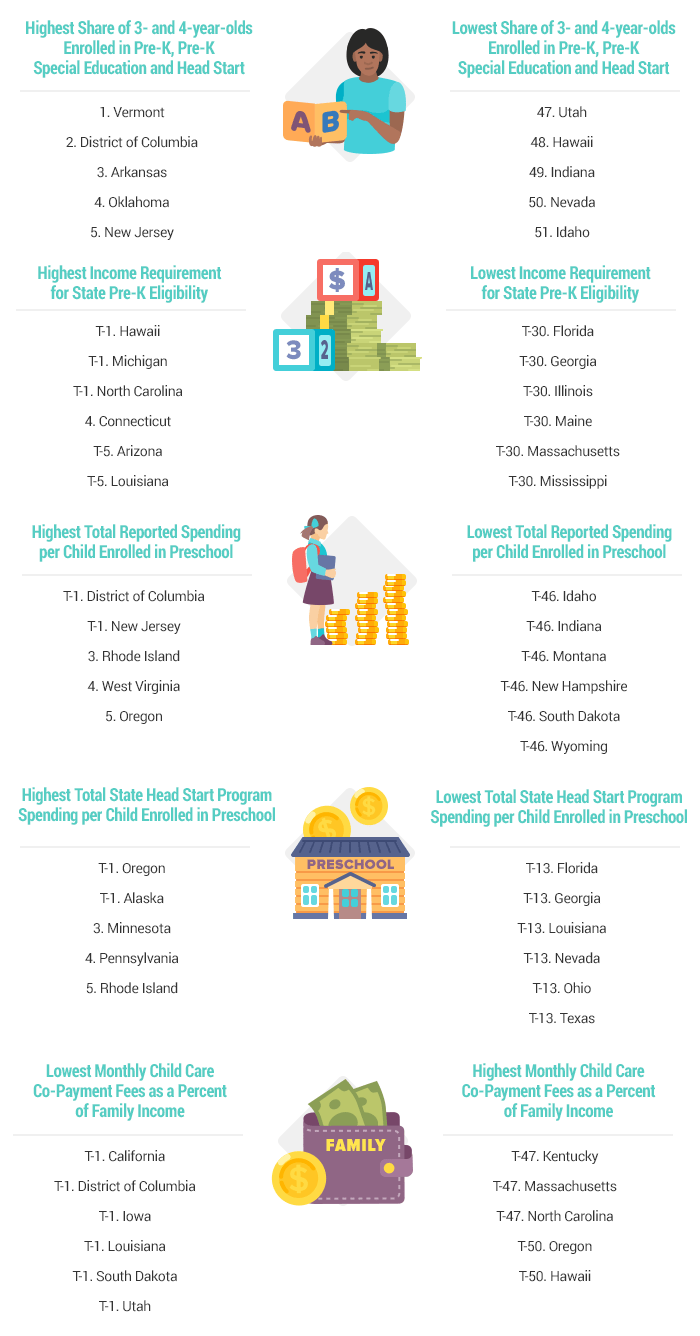Did you know that despite being one of 12 states in the country to have Pre-K programs in 100% of school districts, Georgia still ranks 45th for access to early education?
That’s among the findings in the latest study on states with the best and worst early education systems. In order to determine the best early education systems in America, personal financial website WalletHub compared the 50 states and the District of Columbia across 12 key metrics. The data set ranges from share of school districts that offer a state pre-K program to number of pre-K quality benchmarks met and total reported spending per child enrolled in pre-K.
| States with the Best Early Education Systems | States with the Worst Early Education Systems |
| 1. Arkansas | 42. New York |
| 2. Nebraska | 43. Montana |
| 3. District of Columbia | 44. Idaho |
| 4. Maryland | 45. Kansas |
| 5. Alabama | 46. New Hampshire |
| 6. Rhode Island | 47. Minnesota |
| 7. Vermont | 48. Massachusetts |
| 8. West Virginia | 49. Missouri |
| 9. New Jersey | 50. North Dakota |
| 10. Oregon | 51. Indiana |
Georgia ranked No. 30 in the nation.
Access: 45th
Quality: 9th
Resources & Economic Support: 33rd

Best vs. Worst
- 12 states, such as Alabama, Florida, Georgia, Oklahoma and South Carolina, have the highest share of school districts that offer a state pre-K program, 100 percent, which is 9.7 times higher than in New Jersey, the state with the lowest at 10.33 percent.
- Vermont has the highest share of 4-year-olds enrolled in pre-K, pre-K Special Education and Head Start programs, 84.30 percent, which is 6.7 times higher than in Idaho, the state with the lowest at 12.50 percent.
- Hawaii has the highest income requirement for state pre-K eligibility, $60,120, which is 6.9 times higher than in Minnesota, which has one of the lowest at $8,710.
- The District of Columbia has the highest total spending per child enrolled in preschool, $19,463, which is 36.9 times higher than in North Dakota, which has one of the lowest at $527.
- South Carolina, Maryland and New York have some of the lowest monthly child care co-payment fees (as share of family income), 1 percent, which is 16 times lower than in Hawaii, the state with the highest at 16 percent.
Read the full report and methodology here.




[…] Source link […]